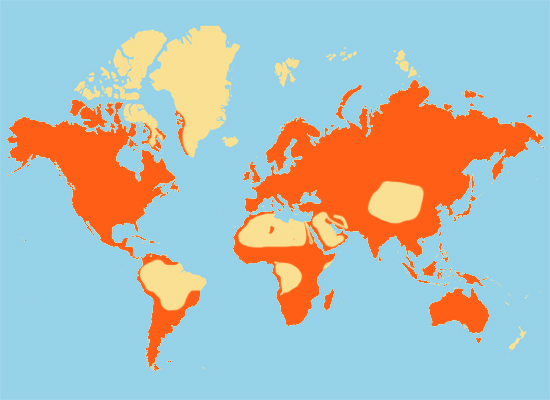Source: http://www.defenders.org/peregrine-falcon/basic-facts
Basic Facts About Peregrine Falcons
The Peregrine Falcon is a raptor, or bird of prey. Adults have blue-gray wings, dark brown backs, a buff colored underside with brown spots, and white faces with a black tear stripe on their cheeks. They have a hooked beaks and strong talons. Their name comes from the Latin word peregrinus, which means "to wander." They are commonly referred to as the Duck Hawk. Peregrine falcons are the fastest-flying birds in the world – they are able to dive at 200 miles per hour.
Diet
Peregrine falcons eat other birds such as songbirds and ducks, as well as bats. They catch their prey in mid-air.Population
There are an estimated 1,650 breeding pairs in the United States and Canada.Range
Did You Know?
Peregrine Falcon chicks, called eyases, eat an incredible amount of food - in six days, they double their weight, and at three weeks are ten times their size at birth!
This bird is one of the most widely distributed species in the world.
It is found on every continent except Antarctica. It can survive in a
wide variety of habitats including urban cities, the tropics, deserts and the tundra. Some migrate long distances from their wintering areas to their summer nesting areas.Peregrine Falcon chicks, called eyases, eat an incredible amount of food - in six days, they double their weight, and at three weeks are ten times their size at birth!
Behavior
Peregrine falcons have adapted to living in many cities and make use of tall buildings that provide suitable ledges for nesting and depend on the large populations of pigeons and starlings in cities for food. They dive and catch their prey in mid-air. Peregrines have few natural predators.Peregrine falcons mate for life and breed in the same territory each year. The male courts the female for about one month, using aerial displays. They make a nest, or scrape, on ledges and in small caves located high on a cliff. Some peregrine falcons will use man-made structures such as bridges and skyscrapers to nest.
Reproduction
Mating season: Late March through May.Gestation: 29-32 days for egg incubation.
Clutch size: 3-4 eggs.
Both the male and female incubate the eggs for about one month. The chicks start to fly in about 42 days, but are still dependent on their parents to learn how to hunt. Peregrine falcons are very territorial during breeding season and will vigorously defend their nests.
Length: 15-21 inches (wingspan of 3.5 feet).
Weight: About 2 lbs.; females are slightly larger than males.
Lifespan: 7-15 years; some can live as long as 20 years.
Weight: About 2 lbs.; females are slightly larger than males.
Lifespan: 7-15 years; some can live as long as 20 years.
Range Map

No comments:
Post a Comment